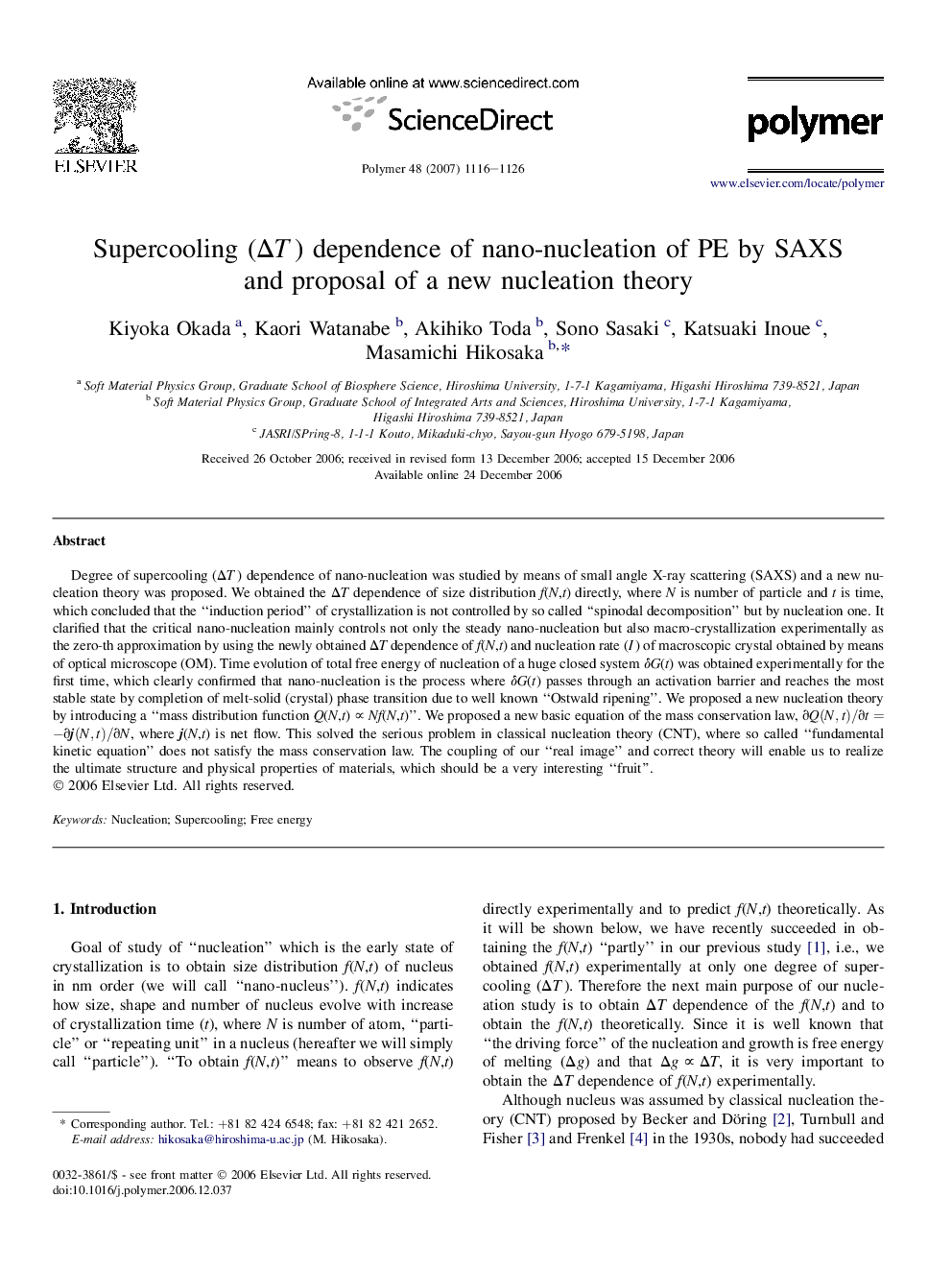| Article ID | Journal | Published Year | Pages | File Type |
|---|---|---|---|---|
| 5188959 | Polymer | 2007 | 11 Pages |
Abstract
Degree of supercooling (ÎT) dependence of nano-nucleation was studied by means of small angle X-ray scattering (SAXS) and a new nucleation theory was proposed. We obtained the ÎT dependence of size distribution f(N,t) directly, where N is number of particle and t is time, which concluded that the “induction period” of crystallization is not controlled by so called “spinodal decomposition” but by nucleation one. It clarified that the critical nano-nucleation mainly controls not only the steady nano-nucleation but also macro-crystallization experimentally as the zero-th approximation by using the newly obtained ÎT dependence of f(N,t) and nucleation rate (I) of macroscopic crystal obtained by means of optical microscope (OM). Time evolution of total free energy of nucleation of a huge closed system δG(t) was obtained experimentally for the first time, which clearly confirmed that nano-nucleation is the process where δG(t) passes through an activation barrier and reaches the most stable state by completion of melt-solid (crystal) phase transition due to well known “Ostwald ripening”. We proposed a new nucleation theory by introducing a “mass distribution function Q(N,t) â Nf(N,t)”. We proposed a new basic equation of the mass conservation law, âQ(N,t)/ât=ââj(N,t)/âN, where j(N,t) is net flow. This solved the serious problem in classical nucleation theory (CNT), where so called “fundamental kinetic equation” does not satisfy the mass conservation law. The coupling of our “real image” and correct theory will enable us to realize the ultimate structure and physical properties of materials, which should be a very interesting “fruit”.
Keywords
Related Topics
Physical Sciences and Engineering
Chemistry
Organic Chemistry
Authors
Kiyoka Okada, Kaori Watanabe, Akihiko Toda, Sono Sasaki, Katsuaki Inoue, Masamichi Hikosaka,
